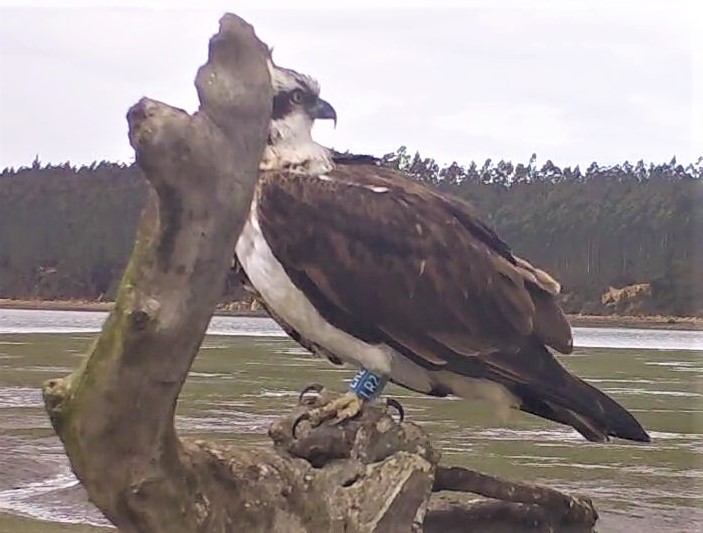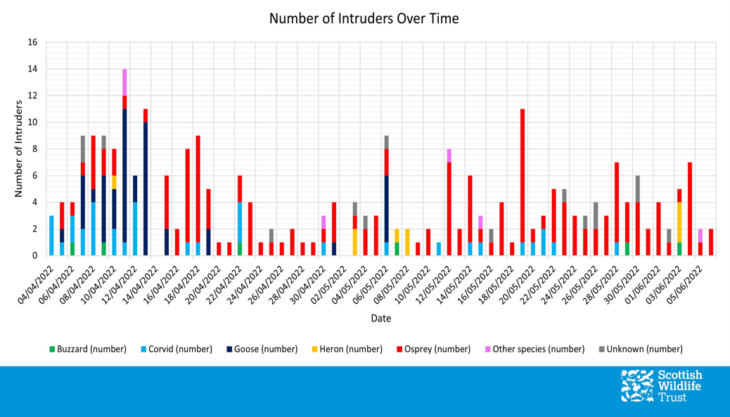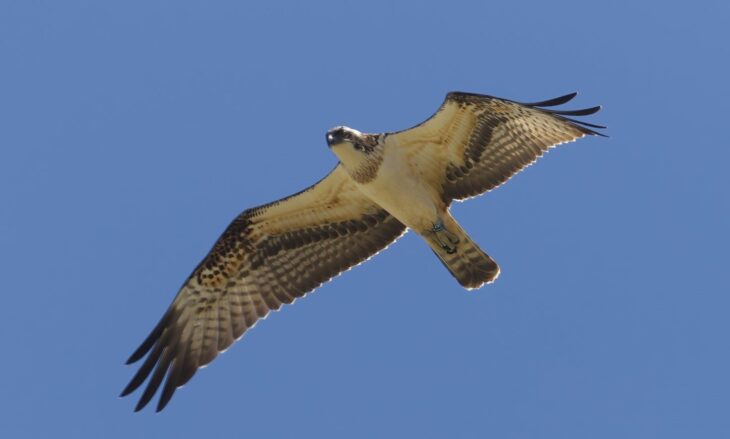Loch of the Lowes Osprey Sighted on their First Migration North
It was with great excitement that we received news earlier this week of a sighting of 2021 Loch of the Lowes youngster ‘Blue LR2’ in the north west of Spain.

Carlos Sainz captured this fantastic photo of the young osprey on the 14th April on a webcam sited on the Eo Estuary, a wildlife haven which borders the regions of Asturias and Galicia and runs to the Cantabrian Sea. Part of the estuary is a nature reserve and was designated Biosphere Reserve by UNESCO in June 2007, recognising the importance of the area for wintering wildfowl, waders, breeding seabirds and migratory species stopping off on their journey.

Given the age of LR2 (now nearly 2 years old), the location of his sighting in the north of Spain and the time of year, it is safe to assume that the young male osprey is returning to the UK on his first migration north. This is a great achievement, as around 50% of youngsters don’t make through their first year and as many as 70% don’t make it to breeding age.
Young osprey returning for their first season are likely to spend much of their time roaming around, getting the lay of the land and checking out potential nesting sites and mates. Indeed osprey already with a breeding territory can expect a sharp increase in intruding activity on their nests in May, when the ‘young pretenders’ return looking for their first site of their own. This can be seen in the data below captured by the Species Protection Team last year, when a clear spike in the number of intruding osprey increased throughout the month of May.

This is not the first time we have had sightings of LR2, as he was also seen on two occasions on his first migration south in the late autumn of 2021. Once again it was Spain he was spotted in, although this time in the south, once near Seville and then again in the Doñana National Park, one of Europe’s most important and beautiful wetlands. Given the late timing of this sighting it could be that he is one of the increasing number of osprey choosing to overwinter in the south of Spain, Portugal and Iberian Peninsula, rather than completing the full migration to West Africa.

It just goes to show the value of colour ringing osprey to understand their dispersal, population distribution and migratory habits. If you happen to spot a colour ringed osprey, be sure to report to the Roy Dennis Foundation to help contribute to the understanding of these magnificent birds.
Here’s hoping we get a sighting of LR2 in the UK, perhaps even at Loch of the Lowes, as male osprey are known to return more closely to their natal sights than young females. Either way, we are sure LR2 is a bit better at handling his wings than one of the last time we saw him!
Make sure you keep up to date with the daily lives of the ospreys as they defend their newly hatched eggs by watching the live webcam and by following us on Twitter or Facebook for regular updates.
‘Raz’ Rasmussen
Perthshire Ranger
The Trust’s Osprey Protection Programme at Loch of the Lowes is supported by players of People’s Postcode Lottery.
Help protect Scotland’s wildlife
Our work to save Scotland’s wildlife is made possible thanks to the generosity of our members and supporters.
Join today from just £4 a month to help protect the species you love.
Preface
It was with great excitement that we received news earlier this week of a sighting of 2021 Loch of the Lowes youngster ‘Blue LR2’ in the north west of Spain. …
